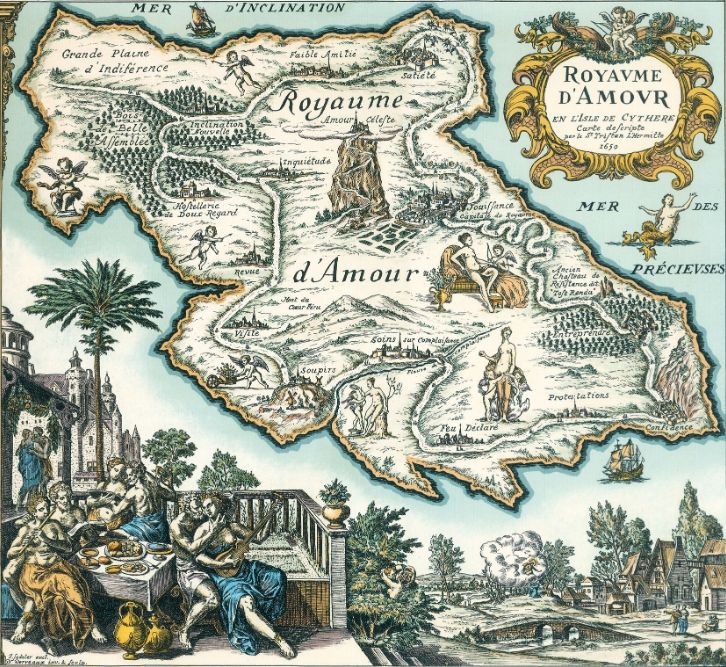At Verso blog, Giuliana Bruno explores the feminist notion of emotional mapping, which she describes as “a cartographic rendering of intimate experience.” As Bruno explains, one of the earliest examples of emotional mapping was found in Madeleine de Scudéry’s 1654 novel Clélie, in which a “Carte de Tendre” directs the protagonist to a utopian land of love. Bruno goes on to show how emotional mapping also figures prominently in films like Louis Malle’s Les Amants (1958) and Alain Resnais and Marguerite Duras’s Hiroshima mon amour (1959). Here’s an excerpt:
Scudéry produced a spatial mapping of emotions, inscribing affects into an architectonics that was a social map. In this respect, the power of her vision can be inspirational today, not just for the political assertion of desire in its discourse, but because it allows us to remap a politics of affects, by putting affects back on our map, and thus to change our own navigational charts. In a way, I see Scudéry’s map as an early symptom of what Julia Kristeva defines, in psychoanalytic terms, as “the intimate revolt.” This is a cartographic rendering of intimate experience, a domain that has been explored in psychoanalysis and extends over a much larger terrain. By showing how this tender map works and assuming tender cartography as a methodological vehicle, my intent is to reclaim this intimacy as a place of interpretation and, in the process, to place cinema on the map of the emotional road atlas. A return to emotion is politically essential for cultural movement, for, in feminist terms, politics closely affects the fabric of our intimate space. To my mind, this intimate experience positively includes the world of imaging and the cinematic “vessel” that carries these images across the social landscape.
Taking the image of the map as a means of such “transport,” the tender map can become, first of all, a guide to relational politics, stretching interpretive borders that were already stretched in our effort to reposition emotion on the cultural scene. In fact, as we are about to see, the most striking feature of the Carte de Tendre is the fluidity of its “tender” geography. This is an inhabited space that lacks borders; as such; it offers an affective journey that is uniquely suited to be carried across new frontiers of site-seeing, in a reversible cartographic exchange between its plan and our own geopsychic design.
